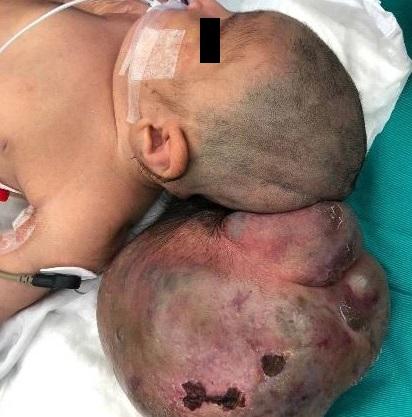Usted está aquí
Peruvian Journal of Neurosurgery
Giant occipital encephalocele in a newborn; surgical treatment. Case report
GABRIELA ESPIN O., ALICIA TORRES M., JOSE RODOLFO BERNAL C., JESUS CASTRO V., ANDREA PAEZ C., BYRON SANUNGA V., CARLOS MORALES T., ENRIQUE CASTRO S.
Abstract (Spanish) ||
Full Text ||
PDF (Spanish)
ABSTRACT
Introduction: Neural tube defects (NTD) are congenital malformations that are caused by the lack of fusion of the neural tube during the embryonic period, exposing the nervous tissue to the outside. There are different types, and they can be cranial (anencephaly and encephalocele) and spinal (spina bifida). The encephalocele is a protrusion or herniation of the intracranial content, through the bony defect of the skull. In this article, we report the case of a patient diagnosed with occipital encephalocele, while reviewing the neurosurgical treatment performed in our hospital.
Clinical Case: We present the case of an 8-day-old male neonate, the son of a 36-year-old diabetic mother, with a prenatal ultrasound diagnosis of occipital encephalocele, evidenced at 16 weeks of gestational age. The patient underwent surgery, performing a plasty of the occipital encephalocele; he presented as a mediate complication infection of the surgical wound that was resolved with antibiotic treatment, later presenting a favorable evolution.
Conclusion: The extension and nature of the hernial content of the encephalocele determine its prognosis, as well as immediate treatment, which can reduce postoperative complications.
Keywords: Encephalocele, Neural Tube, Spinal Dysraphism, Nerve Tissue (Source: MeSH NLM)



